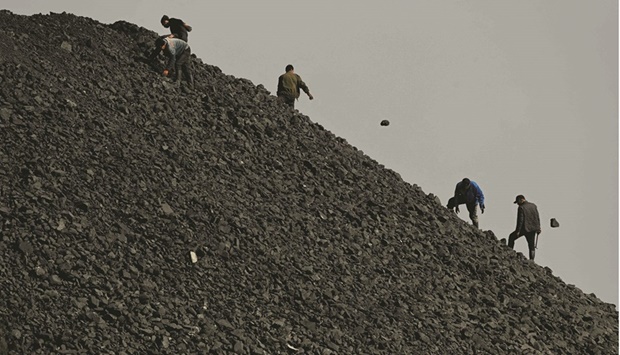Bloomberg
Anyone who’s ever tried to make a lifestyle change knows that it’s easy to start a new habit when times are good. It’s sticking with it when times are tough that’s the hard part.
That’s what’s made the past few months in China, capped off by this month’s National People’s Congress in Beijing, so difficult for people who want to see the nation succeed in helping stave off the worst impacts of climate change.
Gone are the heady days of late 2020, when think tanks, newspapers and state-run enterprises issued a flurry of optimistic outlooks and officials talked about completing the largest energy transition in mankind’s history by zeroing out emissions in the world’s biggest polluter by 2060. Now, with fears of energy shortages growing around the world and concerns that rising coronavirus cases could hinder economic growth at home, the country’s leaders are doubling down on fossil fuels.
Faced with energy turmoil, China is returning to its old habit of coal, no matter what damage it does to climate momentum.
“To a country where coal has been dominant for so long, one of the biggest challenges to get to net-zero is a mindset shift,” said Qin Yan, a carbon analyst at Refinitiv. “Giving the power back to coal now only makes the shift, which had only just begun to slowly take off, harder to complete.”
The shift has been months in the making. Ever since a shortage of coal sparked widespread power curtailments in September and October, leaders have drummed home the message that the dirtiest fossil fuel is also the most important to ensuring continued growth. China has approved mining expansions that’s pushed output to record levels and started construction on new generators powered by the fuel, even as such efforts are shunned in most other parts of the world.
Recent comments from top officials have made clear this isn’t a temporary shift. In a high-level climate meeting this month, Han Zheng, China’s vice-premier, called coal the country’s “last barrier” to energy security. In the same week, President Xi Jinping told a group of lawmakers from China’s coal hub of Inner Mongolia that “we can’t toss away what’s feeding us now while what will feed us next is not yet in our pocket.”
The National Development and Reform Commission, the nation’s top economic planner, told officials from major mining regions at a meeting late last week that it wants to boost domestic production capacity by about 300mn tonnes, according to people familiar with the matter, Bloomberg reported on Monday. It also plans to build a 620mn-tonne stockpile of the fuel.
“The risks China faces now are at a high level unseen for years, and the uncertainties they bring to China’s climate work are still growing,” said Li Shuo, a climate analyst at Greenpeace East Asia, “In the short term, it’s obvious a preference for coal is swinging back.”
That doesn’t mean the country is turning its back on renewables, a sector dominated by Chinese manufacturers. Officials confirmed this month that a massive desert wind and solar power program will grow to at least 450 gigawatts in size, larger than most countries’ total power fleets. And China’s main solar industry group has already projected a record amount of new panels this year.
But pushing both coal and renewables to grow at the same time carries added risks. Investments in new coal facilities could take decades to be paid off, and a growing renewable sector could make them obsolete before that’s done. The government needs a long-term plan to write those coal projects off when renewables are ready to take over, which would involve another round of struggling among different interest groups.
And in the near-term, Xi’s plans to secure a third term at the 20th Party Congress this November mean stability and economic growth will prioritised at any cost, including the climate. The government set a gross domestic product growth target of 5.5% for this year, higher than most estimates. That means a likely return to Beijing’s old doctrine of massive infrastructure spending, which means more energy required to produce steel and concrete and move goods and materials around the country.
“Looking forward at China’s climate work in 2022, it would mark a ‘success’ if there isn’t a big regression,” said Li Shuo.



